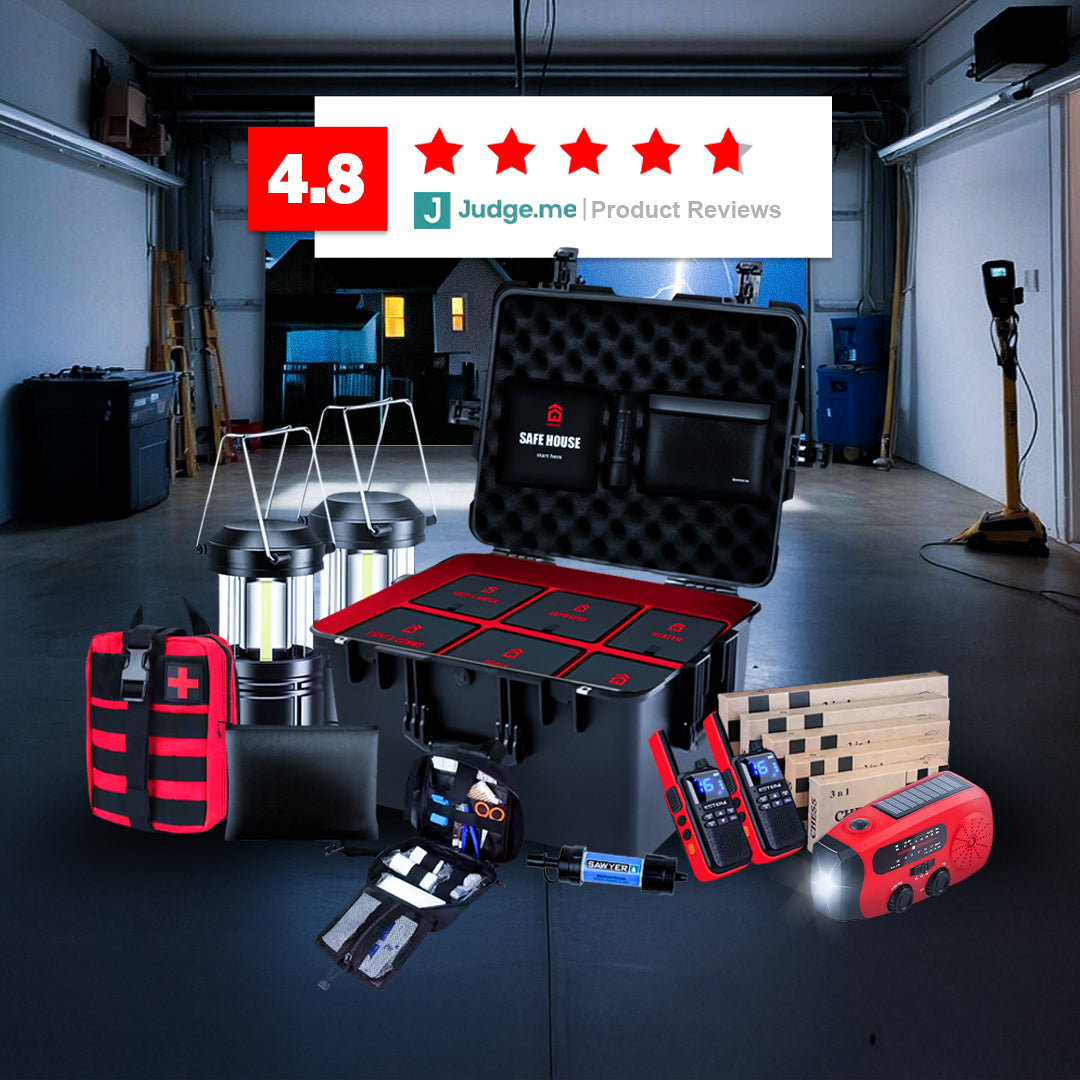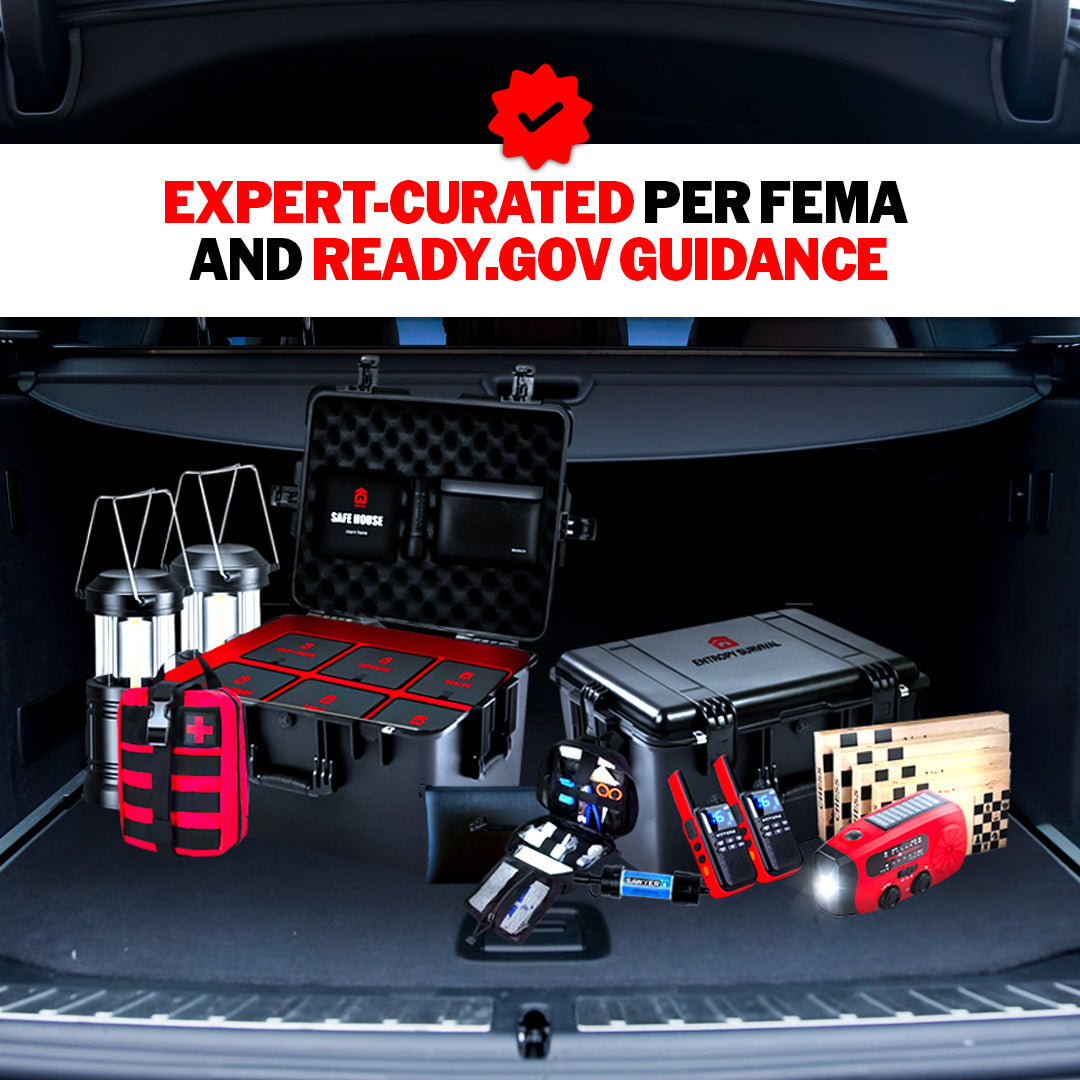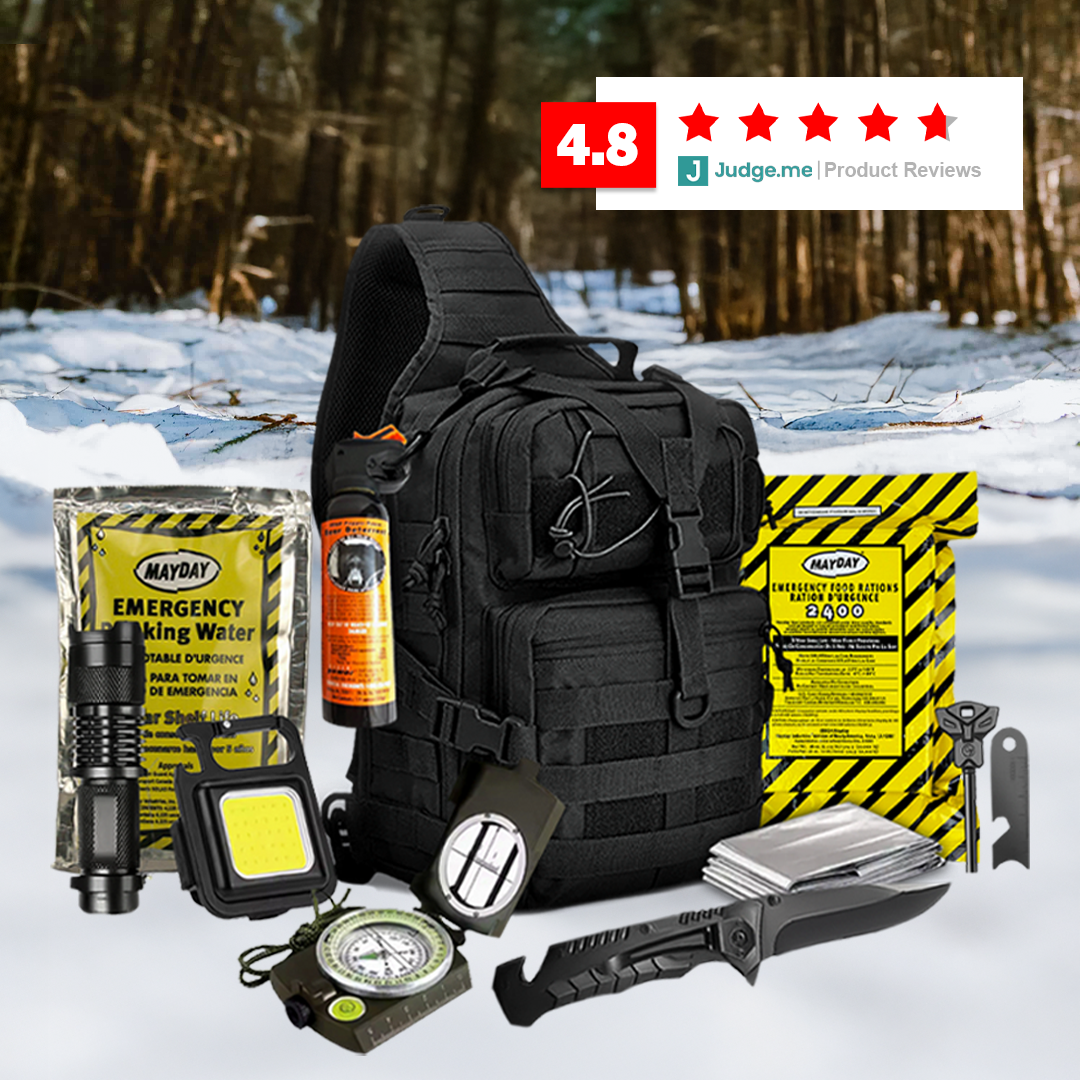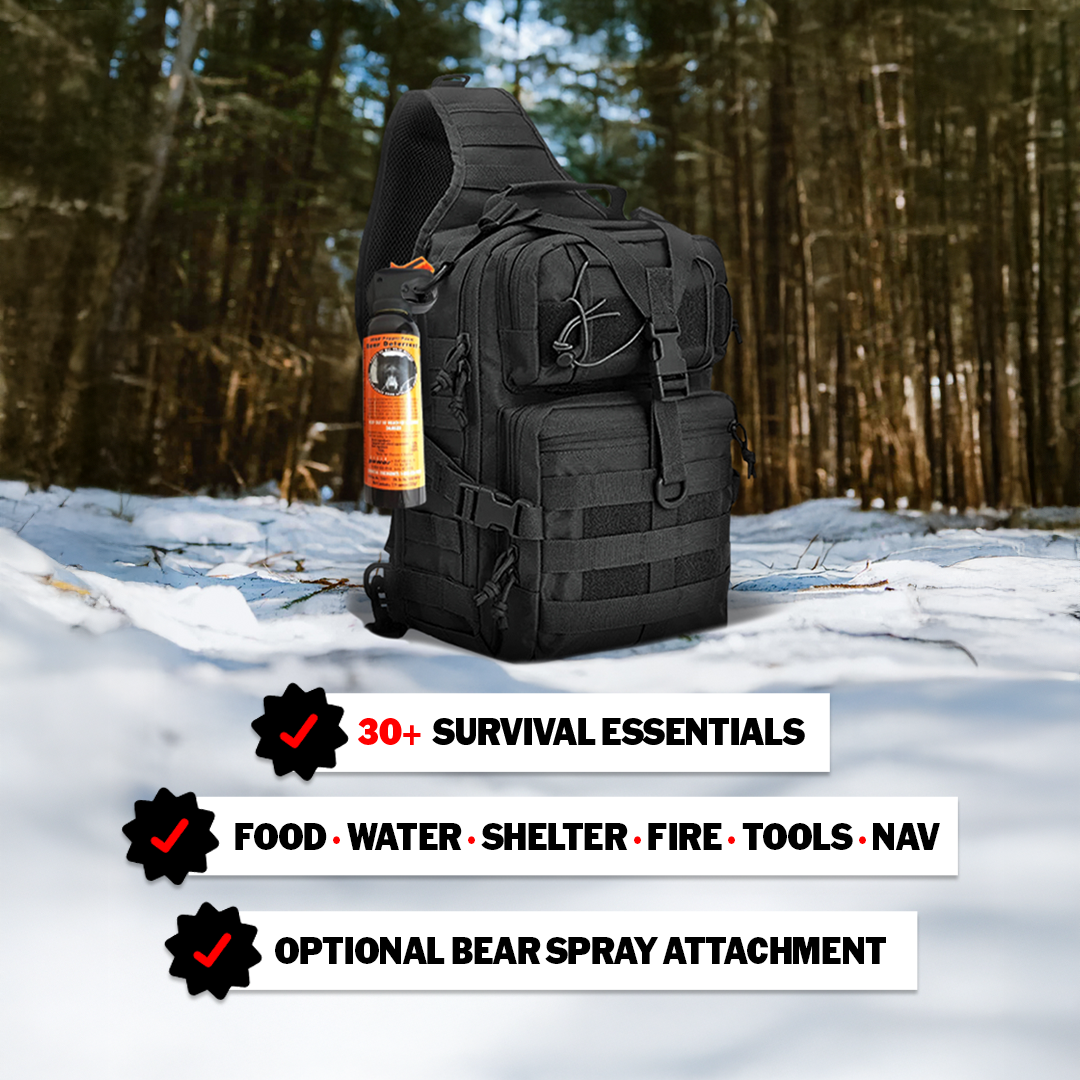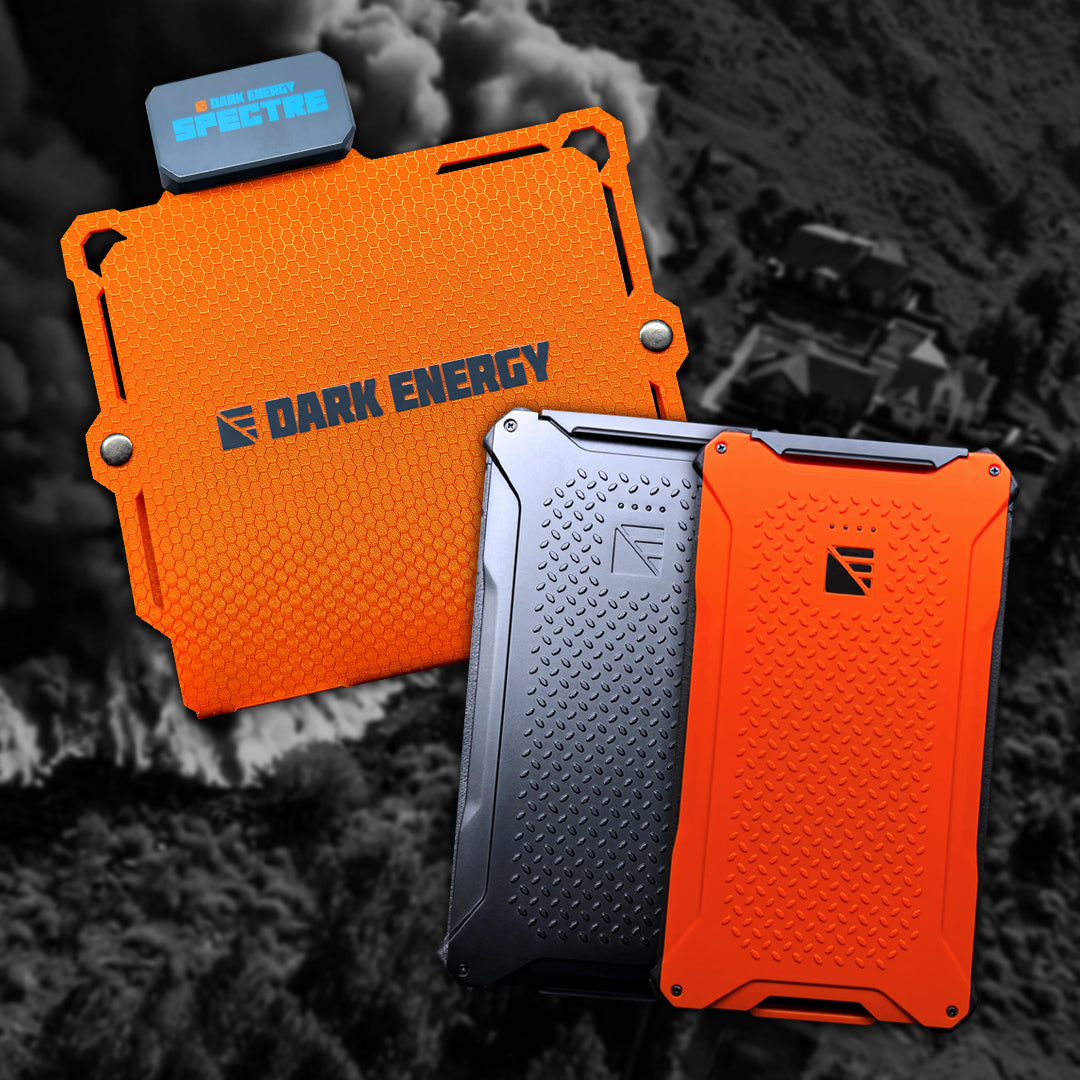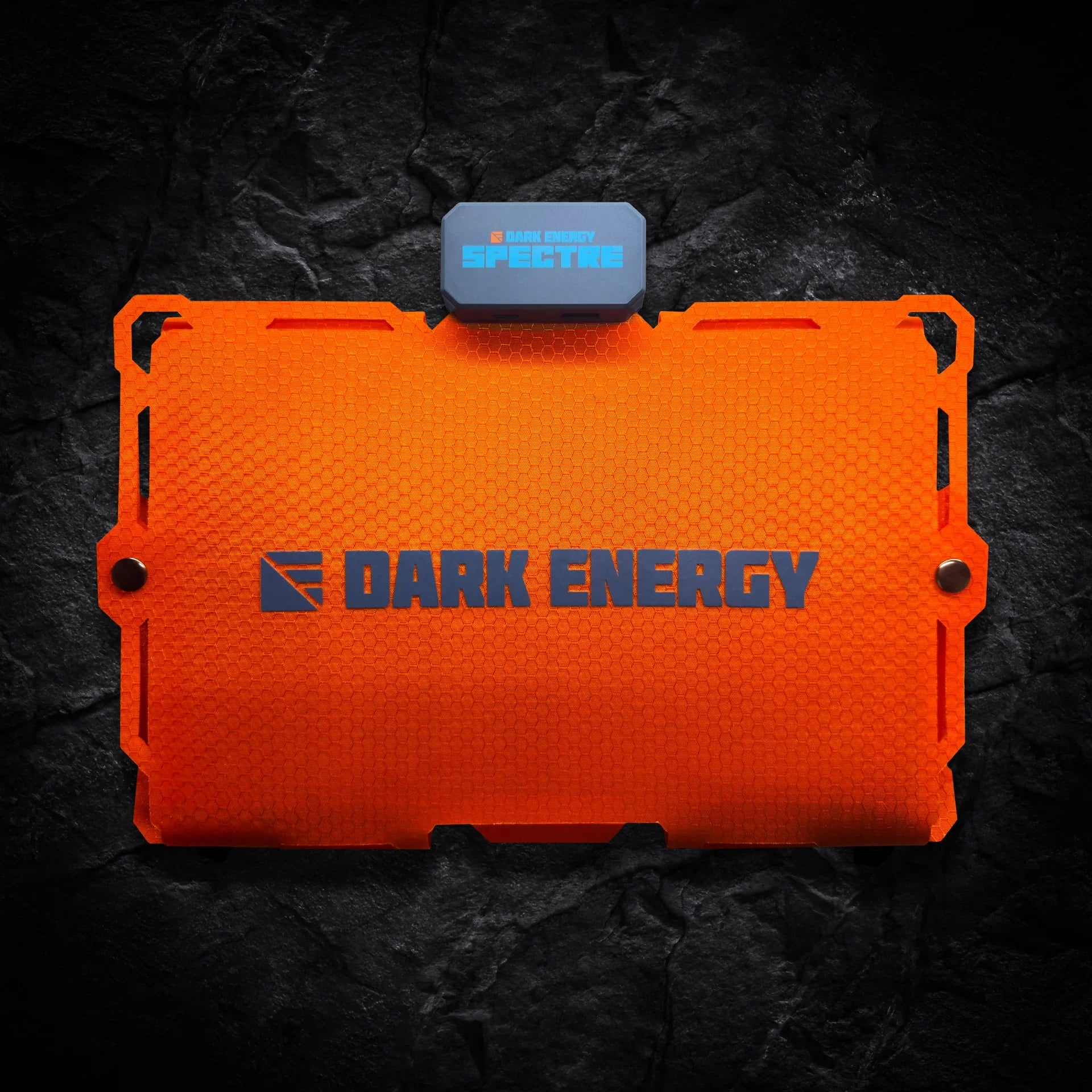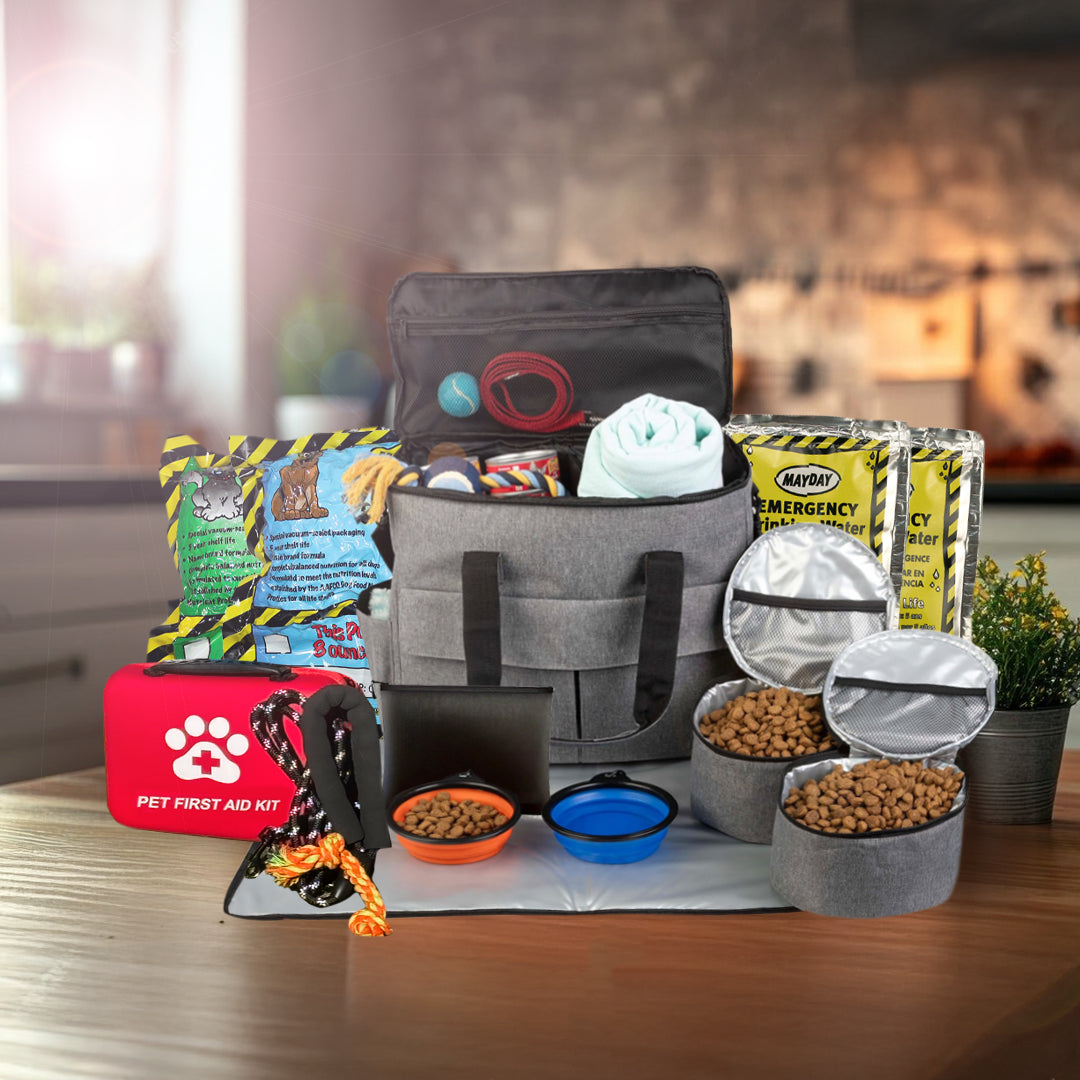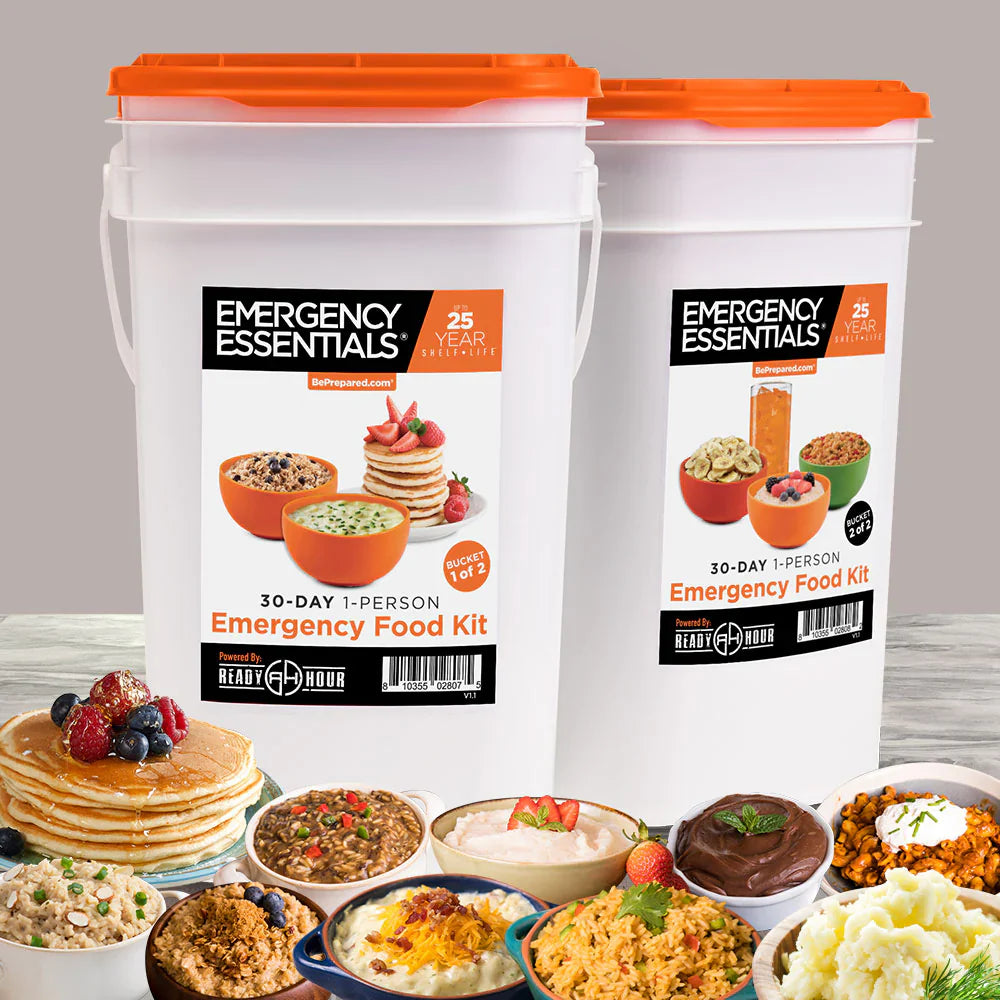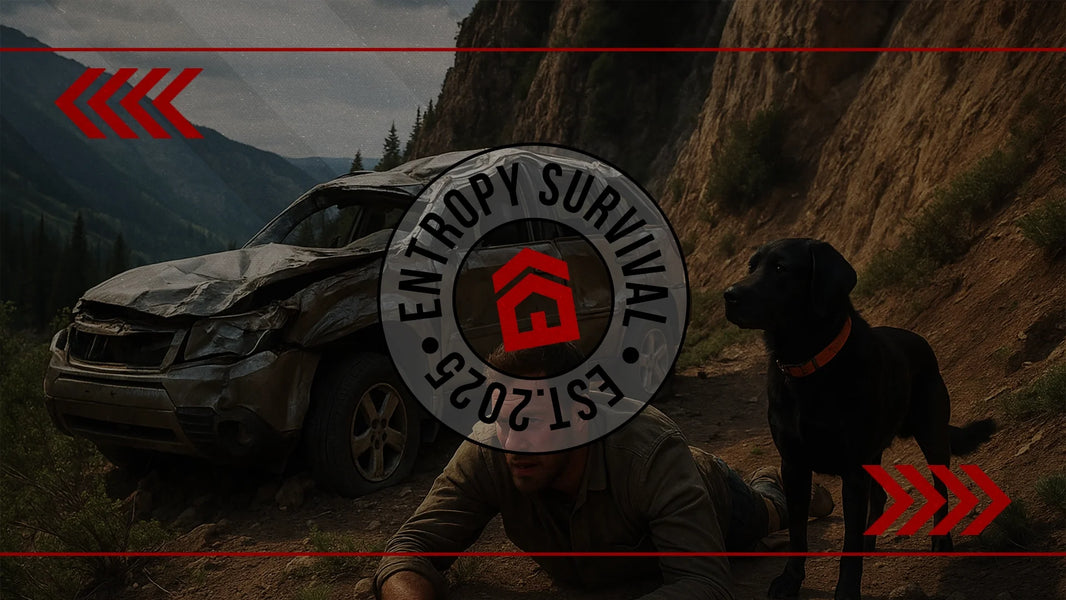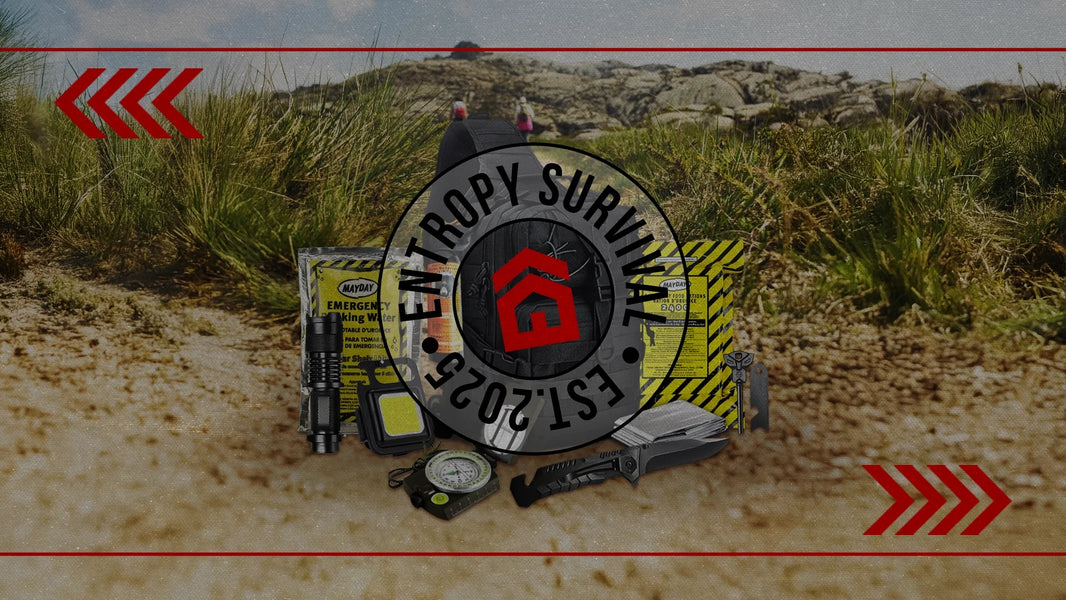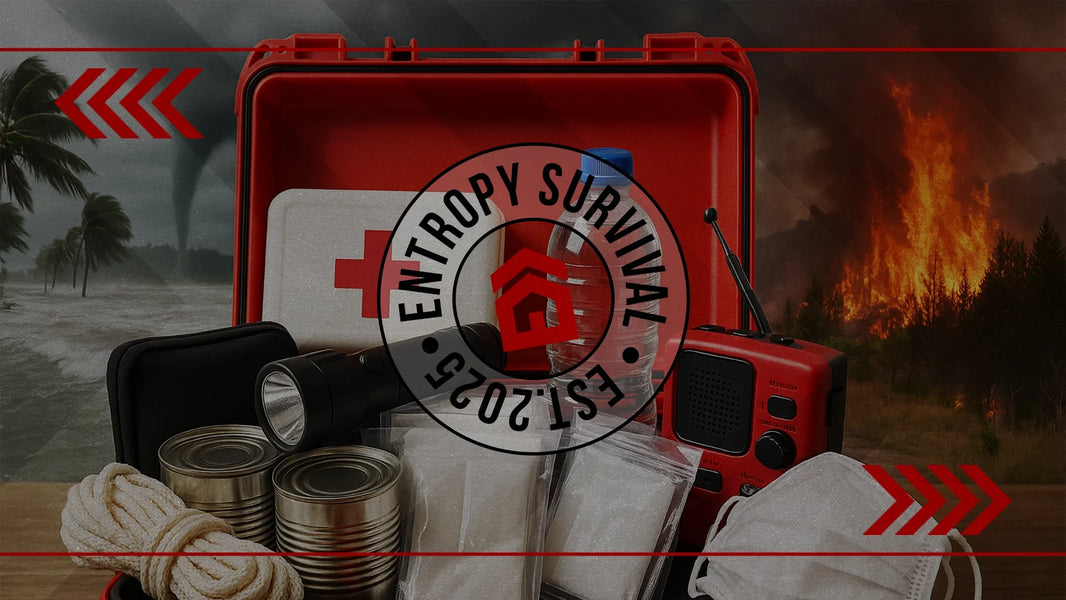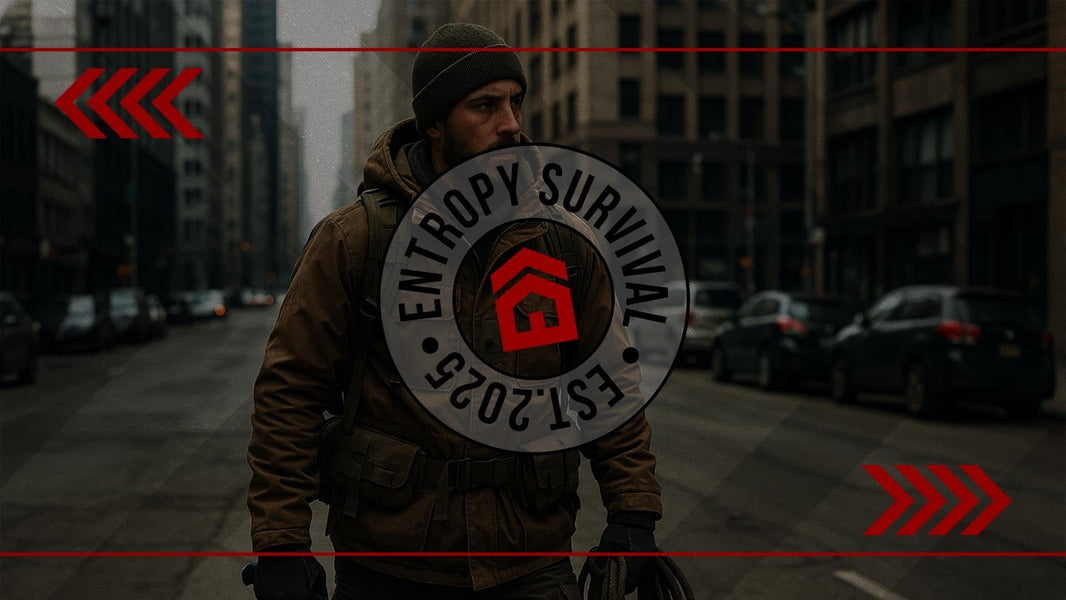What Does It Mean to Bug Out? Staying Ready When Disaster Strikes
When disaster strikes, your ability to make quick decisions can mean the difference between safety and danger. In survival circles, the term "bug out" refers to quickly evacuating your current location, typically your home, to retreat to a safer place during an emergency. The concept originated from military tactics, where troops would "bug out" when their position became compromised.
But what does bugging out mean for families and individuals concerned about emergency preparedness? Simply put, it's the strategic evacuation from a dangerous situation to a safer location with the necessary supplies and plan to sustain yourself until the crisis passes or help arrives.
Many people mistakenly believe that emergency preparedness is only for extreme scenarios or "doomsday preppers." However, the reality is that ordinary emergencies like natural disasters, extended power outages, or local industrial accidents affect thousands of Americans every year. Having a concrete plan for these situations isn't paranoid; it's responsible.
The Four Essential Components of Bugging Out
A proper bug out strategy consists of four key components that work together as part of a comprehensive emergency response system. Understanding each element will help you build a more effective preparedness plan for yourself and your family.
The Bug Out Plan (BOP)
A Bug Out Plan is your emergency evacuation strategy that defines who is responsible for what, where to meet, and where to go. This isn't just about having a vague idea of leaving; it's about creating a detailed roadmap that every family member understands and can follow even under extreme stress.
Your plan should clearly identify the circumstances that would trigger evacuation. These triggers might include official evacuation orders, visible threats like approaching wildfires, or predetermined thresholds like "if water supplies are disrupted for more than 48 hours." The plan should assign specific responsibilities to each family member, designate primary and backup meeting locations, map multiple evacuation routes, and establish communication protocols when normal channels might be unavailable.
A well-crafted plan eliminates confusion during high-stress situations, allowing your family to act decisively when minutes count. At Entropy Survival, we recommend documenting your plan in writing and reviewing it regularly with all household members. Practice drills can make the difference between panic and smooth execution when real emergencies occur.
The Bug Out Bag (BOB)
Your Bug Out Bag, also known as a 72-hour kit, go bag, or emergency kit, is a backpack filled with essential supplies that can sustain you for at least three days away from home. Unlike everyday carry items, your BOB contains a comprehensive array of survival tools specifically selected for emergency situations.
The contents of your bug out bag should address fundamental survival needs: water, food, shelter, first aid, tools, communication, navigation, and important documents. Water solutions should include both stored water and purification methods. Food should be non-perishable, calorie-dense, and require minimal preparation. Shelter components might include emergency blankets, a compact tent, tarp, and cordage. A comprehensive first aid kit with any prescription medications is essential, as are basic tools like a multi-tool, knife, fire starters, and a tactical flashlight.
Remember, your bug out bag should be personalized to your specific needs, environment, and skill level. Our Safe House survival kit provides a curated selection of high-quality gear specifically chosen by survival experts to meet these critical needs without overwhelming you with unnecessary items or substandard equipment that might fail when you need it most.
The Bug Out Vehicle (BOV)
Your Bug Out Vehicle is your means of transport to your safe location. This could be a dedicated vehicle specifically outfitted for emergencies or your everyday car, but it should be reliable and appropriately equipped for emergency evacuation.
When considering your bug out vehicle, think about more than just transportation. Your vehicle needs to reliably get you to your destination, potentially through challenging conditions, while carrying your family and essential supplies. That means considering factors like fuel efficiency and range, potential off-road capability depending on your environment, sufficient cargo capacity, and overall reliability.
During widespread emergencies, roads may be congested or impassable, so your vehicle choice and route planning should account for alternative paths. Keep your vehicle well-maintained, with at least a half-tank of fuel at all times, and consider storing additional emergency supplies in your vehicle beyond your bug out bags. These might include extra water, tools, maps, jumper cables, a spare tire, and emergency cash.
The Bug Out Location (BOL)
Your Bug Out Location is your predetermined destination, a safe haven where you can wait out the emergency with adequate supplies and protection. This destination should be planned in advance, not decided in the midst of a crisis when options may be limited and judgment clouded by stress.
Ideally, your bug out location should be outside major population centers to avoid the competition for resources and potential civil unrest that can accompany major disasters in urban areas. It should be stocked with emergency supplies to supplement what you bring, accessible via multiple routes in case primary roads are blocked, and known only to trusted individuals to maintain operational security during a crisis.
This could be a family cabin, a friend's rural property, or another secure location where you've arranged to stay during emergencies. Not everyone has access to a dedicated retreat property, but creative alternatives can include arrangements with family members in different regions, reciprocal agreements with like-minded friends, or even identifying public campgrounds or other facilities that could serve as temporary refuge locations.
Bug In vs. Bug Out: Making the Critical Decision
One of the most important considerations in emergency preparedness is knowing when to leave and when to stay. Contrary to what some believe, bugging out isn't always the best response to every emergency. In fact, evacuation carries its own risks and should be undertaken only when the benefits outweigh the dangers of remaining in place.
The decision to bug in or bug out depends on numerous factors, including the nature of the emergency, your location, available resources, and family circumstances. As a general principle, your home should be your default choice for riding out an emergency unless specific factors make leaving the safer option. This is why we emphasize building both bug-in and bug-out preparations as complementary strategies.
Bugging in makes sense when your home remains structurally sound and safe, during short-term emergencies where services will likely resume quickly, when evacuation routes are blocked or more dangerous than staying put, or when you have adequate supplies to shelter in place. Many emergency management professionals recommend this approach first, as it keeps you in a familiar environment with access to your stockpiled resources.
Conversely, bugging out becomes necessary when authorities mandate evacuation, when your home becomes structurally compromised, during natural disasters that directly threaten your location such as floods or wildfires, when staying puts you at risk from civil unrest or other human threats, or when essential resources like water, food, or medicine are depleted with no resupply in sight.
The key is making this decision based on clear, objective criteria established in advance, not emotion or panic in the moment. Your bug out plan should include specific trigger points that would necessitate evacuation, helping you make this critical decision under pressure.
Why Preparation Matters: Real-World Bug Out Scenarios
Emergency preparedness isn't about paranoia—it's about practical readiness for real-world situations that happen regularly:
-
Natural Disasters: From hurricanes and floods to wildfires and earthquakes, natural events displace thousands of Americans annually.
-
Infrastructure Failures: Power grid failures, water system contamination, or gas leaks can make homes temporarily uninhabitable.
-
Localized Emergencies: Chemical spills, train derailments, or industrial accidents sometimes require rapid evacuation.
The time to prepare is before you need to act. As our veteran team at Entropy Survival knows, proper preparation provides peace of mind and practical options when emergencies occur.
Practical Preparedness: Starting Your Bug Out System Today
The journey to comprehensive emergency preparedness doesn't happen overnight, but small steps taken consistently can quickly build into a robust system that protects your family when unexpected situations arise. At Entropy Survival, we've developed a practical approach to help families build their preparedness systems without feeling overwhelmed or breaking the bank.
Start by focusing on the fundamentals. Water, food, shelter, and first aid form the core of any preparedness strategy. Begin collecting high-quality water containers and purification methods, along with a supply of non-perishable food items that your family actually enjoys eating. Add basic shelter components like emergency blankets and a quality tarp. Include a comprehensive first aid kit with any medications your family requires. These essentials alone will put you ahead of 90% of the population during common emergencies.
Once you've established these basics, expand your system gradually. Add communication tools like a hand-crank radio and portable charger. Incorporate navigation aids such as physical maps of your region and a quality compass. Gather copies of important documents and store them in waterproof containers. Add specialized tools appropriate for your environment and skill level. The key is consistent progress, not immediate perfection.
Knowledge and skills are just as important as physical supplies. The most expensive gear becomes worthless without the knowledge to use it effectively. Take time to learn basic emergency skills like water purification methods, first aid techniques, navigation without electronics, and simple shelter construction. Practice using your gear before you need it in an emergency. Include family members in age-appropriate training so everyone understands their role in your emergency plan.
At Entropy Survival, we believe that emergency preparedness isn't just a precaution; it's a responsibility. Our team of experts, led by our Army Veteran CEO, has curated high-quality survival kits and resources to help you prepare effectively without wasting money on unnecessary or unreliable equipment. We understand that true preparedness comes from the perfect balance of quality gear, practical knowledge, and thoughtful planning.
Our flagship Safe House 'Survive All' Bag provides a comprehensive foundation for your bug out preparations, with premium tools and supplies selected for reliability when it matters most. Every component has been tested and approved by our team of survival experts who understand firsthand what works in real emergency situations. Complementing our physical products, our AI-powered Survive All Guide offers customized guidance for emergency situations, putting expert knowledge at your fingertips when you need it most.
Don't wait until disaster strikes to start preparing. The time to build your bug out system is now, when you have the luxury of careful selection rather than panicked purchasing. Visit our website to learn more about our premium emergency preparedness products and take the first step toward comprehensive readiness today.
Survival isn't just our business; it's our way of life. Join the community of prepared individuals who sleep soundly knowing they've taken concrete steps to protect what matters most.
Make sure to check out more articles in our News & Views section. Feel free to reach out any time to see how Entropy Survival can help you prepare you and your family for any disaster or survival scenario.


